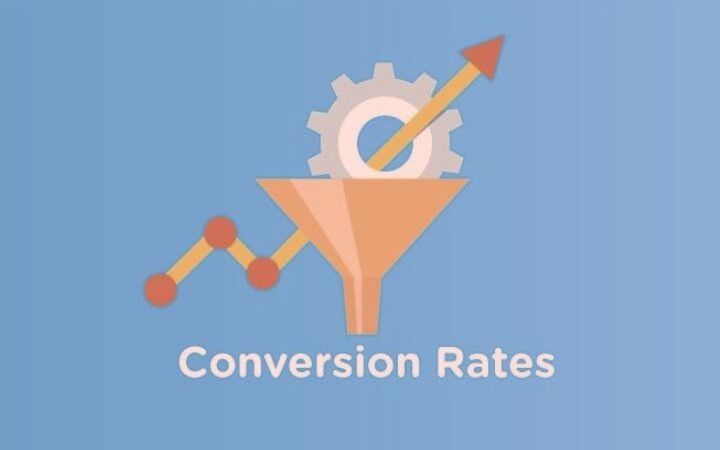Robo-Advice – Automated Investment Advice And Financial Portfolio Management

Consumers increasingly use automated applications or Automated investment (so-called “tools”) to manage their finances, find out about products, compare different offers or even make product purchases. Corresponding recommendations are now being created in all banking, insurance and financial services areas.
Robo-Advice is typically understood to mean supporting a customer in investing with the help of partially or fully automated systems (e.g. using algorithms). Two features are characteristic of Robo-advice:
- Human interaction or intervention in the counselling process is either completely absent or present only to a limited extent; the customer communicates with a computer – for example, via a smartphone app or a website.
- The service is provided based on an algorithm. The solution offered to customers is based on previous data entry. This includes objective data such as age and occupation and subjective data such as the investment goal, individual financial situation and individual financial skills.
What types of automation are there?
Even if digitization has found its way into all areas of financial services, the respective penetration in the separate regions still differs significantly.
Robo-advice on investing can be provided legally through investment advice, financial portfolio management, or investment brokerage.
Investment advice and financial portfolio management.
The currently most popular offering is in the area of investment advice and financial portfolio management. Automated tools for financial portfolio management (often also called “asset management” or “portfolio management”) are mainly used here.
Potential customers provide the service provider with information about their investment goals and risk appetite, which an algorithm uses to determine the investment strategy that suits the customer profile, for example.
In the case of investment advice, the customer is suggested specific financial instruments that match their customer profile, such as a particular investment fund.
Other banking and insurance services
Digitization and, in particular, the automation associated with it are also expanding in the other banking services. Automated Investment advice and financial planning are still mainly provided via comparison portals for mortgages, personal loans, bank accounts and bank deposits.
The range of functions varies and can range from mere customer information to the conclusion of a contract with one of the listed providers.
In most cases, the comparison portals act as intermediaries and not as providers of the actual product.
In addition to the comparison portals, outlets have also been established which, based on the information provided by the customer, submit concrete product suggestions,
New business models are also emerging in the sale of insurance products. Here, suitable products are also recommended based on algorithms – for example, for the old-age provision or to protect against damage.
In addition, individual insurance companies enable their customers to create personal offers for the desired insurance cover on their websites.
These are based on information the customer provides or has previously provided. It is often characteristic that the advice is initially automated and then supplemented by personal contact.
What opportunities and risks are associated with automated investment advice and financial portfolio management?
The following benefits can result from automating investment advisory and financial portfolio management services:
- Lower Costs
- Automating financial services can reduce their costs. This allows individual providers to offer more extensive services at the same time. However, it does not always follow from this that the offer is made entirely free of charge for the customer because costs also arise for developing and operating the underlying IT systems. Like traditional offers, the provider must first put together suitable product solutions.
- More up-to-date and more comprehensive information
- It can generally be assumed that automated tools and algorithms can be programmed faster than investment or financial advisors can be trained. In this way, information in the case of computerized offers can be up to date more quickly. In addition, automated tools can process more significant and complex amounts of data in a shorter time and thus check a more extensive range of offers.
- Easier Access
- Because automated tools are inherently cheaper to deploy, a more comprehensive range of customers can potentially access the services. In addition, computerized tools are expanding the variety of offers, leading customers who have reservations about conventional proposals to use the corresponding services. Customers can also use automated tools to access a broader range of service providers, who can be reached almost anytime via online media.
- More rational decisions
- Automated tools can lead to more rational decisions, as so-called “soft factors” play a lesser role in the investment process. The lack of personal relationships can make it easier for the customer to create a free decision that people less influence.
- Better transparency
- The predominantly online-based offers can facilitate the transparency and documentation of the financial investment process. For example, automated tools can systematically record all process phases and provide a history. Customers can thus access complete documentation of their relationship with the service provider, which can be particularly helpful with long-term contracts.
The following risks may be associated with the automation of investment advisory and financial portfolio management services:
- Incomplete information, faulty information processing and lack of diligence
- In general, the result of any consultation also depends on what information is made available to the customer and what competencies he has. Therefore, customers can make wrong decisions with automated investment advice or financial portfolio management because they have insufficient information or misinterpret it. In contrast to conventional offers, however, it can be more difficult for the customer to communicate understanding problems or ask questions with automated solutions. This is especially true for tools that work fully automatically, without any human interaction. It is, therefore, advisable to always address open questions before concluding a contract or initiating a transaction. Furthermore, it is advisable to read and understand all contract documents, in particular general terms and conditions and contract conditions, with the same care as conventional offers before concluding the contract.
- Incorrect data entry (lack of due diligence)
- Most of the time, automated tools appear incredibly user-friendly and easy to use. This can favour a certain carelessness in the use by the customer. This can lead to unfavourable decisions that do not consider all relevant risks ( e.g., careless data entry or careless answering of questions).
- Changing offers and changing needs
- Automated tools are highly dependent on the data input of the customer. Customers must therefore be aware of how the data provided can influence the results of an instrument. In the worst case, they receive a suggestion for an investment that does not correspond to their original interest, for example, because essential factors such as their risk appetite or income have changed.
- Up-to- dates
- Since automated tools can, in most cases, provide up-to-date recommendations for investments on a daily or even minute-by-minute basis, it is possible that a recent transaction is no longer up-to-date or no longer corresponds to the wishes and goals of the customer. Conversely, this means that the customer must check the accuracy and up-to-dateness of the data he has entered before investing. Otherwise, the investment can be based on incorrect data.
- Non- transparent costs and fees
- Customers cannot always judge why a particular product is recommended to them as a preference, just like in a face-to-face meeting. In these cases, they should be aware that the provider’s choices can certainly influence even an automated investment recommendation perceived as independent and objective. It is conceivable, for example, that providers want to achieve specific distribution and sales goals, prefer to recommend in-house products, or pick offers with higher fees and higher commissions.
- Distorted perception of a “personal” offer
- Customers may have only a limited idea of a “tailor-made” offer and therefore interpret the result of an automated tool as a personal consultation. For example, the questions on many comparison websites are kept rather general to enable quick information about an offer. However, this offer does not necessarily correspond to the best possible or most suitable offer for the customer but often represents a rough (price) orientation. In this case, one usually does not speak of customer advice but customer information. The latter almost completely ignores the personal situation of the customer. Providers could also tempt the customer to make unfavourable decisions, for example, by leading questions or default settings.
- Data Abuse
- Automated tools are highly dependent on customer data. However, it may not always be clear to customers whether and how the provider uses this data. He may also evaluate the data for other purposes or pass them on to third parties. In the context of automated offers, customers can consent to the “improper” use of the data, consciously or unconsciously, without being aware of it. An example is the widespread use of online checkboxes. Customers usually agree to the terms and conditions and data protection regulations without knowing whether they have read them.
- Incomplete tools
- Automated tools are based on algorithms. The investment recommendation is therefore based on specific parameters or market assumptions that do not necessarily correspond to the particular needs of all users. Among other things, this can result in restrictions on the quality of the recommendation. In addition, tools may be limited to certain assumptions or predetermined categories. In this case, the proposal may be incomplete and not justice to the customer’s situation.
- Faulty and outdated tools
- The underlying algorithms can vary in their complexity. In the case of complex algorithms, in particular, there is a risk that they have been programmed incorrectly. Another chance is that algorithms are not adapted to changed framework conditions. Both can lead to incorrect or even unsuitable recommendations.
- Manipulation In
- General, automated tools can also be manipulated. The algorithms can be changed, for example, by hacker attacks, or the sources that use them as a basis for information can be managed. There is often a lack of human intervention options in the process. At the same time, a control authority established in conventional procedures may be missing.
What costs and fees can I incur if I use automated tools?
First, there may be costs for the product you are purchasing. In addition, the providers of automated investment advice usually also receive remuneration for recommending products.
For providers of automated financial portfolio management, the payment is generally based on a percentage of the custody account volume. In addition, there is often a performance-related (additional) fee.
If your robot-advice provider is legally obliged to provide you with cost information, you can use the so-called Obtain ex-ante (before) and ex-post (afterwards) cost information.
If you have any questions about this or would like a detailed breakdown, please ask the provider of the service or product directly.
If your Robo-advice provider is not required by law to provide you with ex-ante and ex-post cost information, you should ask the service or product provider directly. Reputable providers will provide you with information.
What should I watch out for when using automated tools?
o be able to take advantage of automated investment advice or financial portfolio management, you primarily need basic knowledge of information technology.
You should be familiar with the basics of IT security. Often you will not receive personal support from the providers.
You must therefore inform yourself about the opportunities and risks of the products offered in each case before you conclude a contract or place an order.
Most importantly, you need to understand the costs associated or potentially incurred with the deal.
- Question the investment recommendation or investment strategy of the provider. Also, clarify what risks you take with automated offers and how these risks differ from conventional suggestions. Check whether the proposed investment recommendation or strategy corresponds to your opportunity and risk preferences. Make sure that you can do without the invested capital for at least the recommended investment horizon and that you can also pay the costs and fees associated with the contract.






